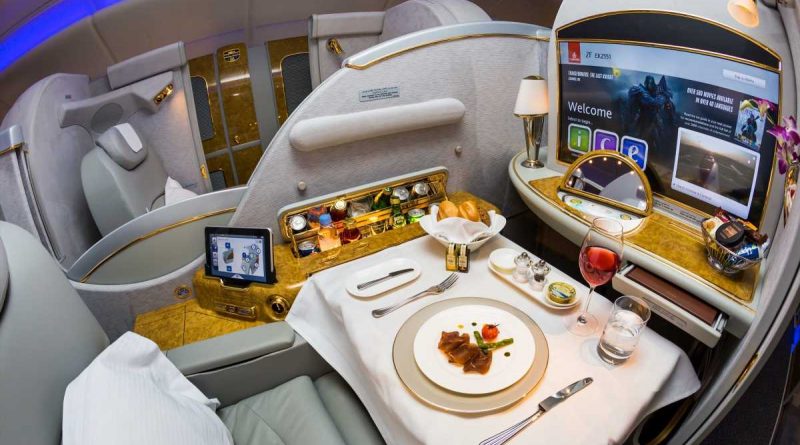How I decide when to redeem points for a flight or pay cash
Load Error
Points and miles are a great way to save money on travel. You can stretch your miles to save a ton of money on travel, whether you’re flying one state over or going on an around-the-world trip in business class. This has opened many doors for me over the years, like giving me the ability to fly 150,000+ miles per year without breaking the bank.
At the same time, I don’t always use points to book travel. There are many times when I prefer to pay cash for a specific flight and save my points for future redemptions. I always compare the cash and points price of a specific ticket to make sure that it makes sense to use my hard-earned miles instead of paying out of pocket.
Many of my colleagues at TPG do this too, but each of us has a different way of valuing our miles and deciding when to use them for a trip. In this article, I want to take you through my methodology for deciding when to use points and when to pay cash for airfare.
I’ll break down how I compare cash and points and show you a few examples of my methodology in action. Remember, this is just my methodology. You may value points differently and have your own way of deciding when to use them. So, use this article as inspiration for creating your own points vs. cash methodology.
For more TPG news delivered each morning to your inbox, sign up for our daily newsletter.
In This Post
How I decide when to redeem points for a flight
For me, deciding to use points or pay cash for airfare is a multi-step process — here’s a look.
Step 1: I think through the trip I’m booking
The first thing I do when deciding whether to use points or cash for a ticket is to plan out my trip mentally. I think through how I’d like to fly to my destination, how long I’ll stay and if I need to make any stops along the way.
I also try and think through the general costs associated with my trip. For example, if I’m flying home to Chicago, I can stay with my parents. On the other hand, if I’m traveling to Oslo or Dubai, I’ll need to stay at a hotel and pay more for food and activities. If it’s an expensive trip, I may use points to cover cheaper flights to save money for other trip expenses, even if it’s not a business class trip.
Likewise, I won’t book a first-class ticket if I’m traveling from New York to Washington D.C. But, I’ll opt to fly business class if I’m traveling long-haul to Asia, Australia or other far-flung destinations. Chances are, I’m going to cover my flight with miles on these longer routes, since premium cabins are expensive.
I also think through how flexible I need my trip to be. If I think I may need to make last-minute changes for a domestic ticket, there’s a good chance I’ll book an award ticket. Most airlines now allow you to cancel award tickets and redeposit miles for no fee. Paid tickets, on the other hand, will result in travel credit with the airline.
The same goes for multiple stops on an international route. For example, I often stop in Prague when traveling to Europe so I can visit family. Multi-stop (or multiple one-way tickets) paid tickets are often more expensive than simple round-trip tickets when flying international, so this often steers me in the direction of booking with miles.
Related: How you plan and organize your trip says more about you than you think
Step 2: Consider my current financial situation
I also think through my current financial situation before booking any trip. I try to save most of my income, so if I have a large bill coming up or know that I’ll otherwise have greater expenses in the next few weeks, I’m more apt to book travel with points. If it’s going to be a relatively low-expense month, I may opt to pay cash for a reasonably priced fare.
Related: 6 simple rules to stay out of credit card debt
Step 3: Look at my points balances and available certificates
Before looking at points and cash costs, I double-check my points and miles balances across all my accounts. I keep these logged in a spreadsheet (and soon, the TPG app) for easy access. This gives me a quick look at the types of points and miles I have available to me before I search for pricing in the next step.
Further, I check and see if I have any certificates or travel credits available. If I have a Delta or Alaska companion certificate available, I may opt to pay cash for a ticket if my girlfriend and I need to fly somewhere together, even if cash fares are high. These certificates effectively cut the cost of our airfare in half.
I also think through my future travel plans to ensure the miles aren’t better spent elsewhere. For example, I’m planning a large Europe trip later this year, so I know I need to save enough American Express Membership Rewards points to get there in business class. I need to make sure that I don’t spend these miles before I redeem for this trip.
Related: How to save up to $1,000 on popular summer routes with the Alaska Companion Fare
Step 4: Check cash prices and award space, find cent-per-point value
Next, I run a quick search with Google Flights to get an overview of how much airfare will cost in my desired class of service. On domestic routes, I have a rule where I’ll buy airfare if it’s $75 or less one-way. It’s hard to get a worthwhile redemption value when flights are this cheap.
Then, I’ll start diving into the cost of award tickets. I use my points and miles knowledge to try and score the best deal on all award flights I book. For example, using ANA Mileage Club to book round-trip business class tickets to Europe or Avianca LifeMiles to book short domestic flights.
I’ll run a handful of sample searches to find the best flight options for my specific redemption. Then, I’ll find a cent-per-point value that comes into play in the next step. To do this, I subtract the award taxes and fees from the cost of a paid ticket and divide that number by the number of miles required. Then, I multiply that number by 100.
For example, say I can fly from New York-JFK to Mexico City (MEX) in business class for 49,000 Delta SkyMiles and $36 in taxes. A cash fare on the same flight is $900. This would give me 1.76 cents per mile in value.
Here’s a look at the math: ($900-$36) / 49,000) *100 = 1.76 cents per point
Speaking of taxes and fees: I keep these in mind when choosing whether or not to book an award ticket. For example, if I’m flying from New York-JFK to London-Heathrow (LHR), I know I’ll have to spend at least $800 in fuel surcharges on an award ticket. This makes me less apt to booking an award ticket over a low-cost business class fare if I can find one.
Of course, if there’s no award space available and I need to fly, I’ll stop the process here and either pay cash or use the Chase Ultimate Rewards Travel Portal to book my ticket. Likewise, if there’s an incredibly cheap cash fare, I may opt to pay for the ticket at this step.
A note on the Chase travel portal
Speaking of the Chase Ultimate Rewards Travel Portal, I never book flights that give me less than 1.25 cents per point in value with airline miles — even if I want to save cash. Instead, I book through the Chase portal, where I’ll get a minimum of 1.25 cents per point with my Chase Sapphire Preferred Card.
You can book just about any paid flight through the Chase portal and get a predictable cent per point value. Plus, these are booked the same as any other paid airfare, so you’ll still earn redeemable and elite qualifying miles on all tickets you book through the portal.
Related: Sweet spots: The best ways to use Chase Ultimate Rewards points
Step 5: I check my personal point valuations
Here at TPG, we publish our monthly points and miles valuations to give you a baseline for how much your loyalty points are worth. That said, we encourage you to do your own personal valuations. Everyone’s travel needs are different, so you may value a certain type of miles more than we do. And that’s OK: there’s no right or wrong way to redeem points and miles.
I developed my personal valuations by averaging the cent-per-point value of every redemption I’ve made with a specific program or transferrable points program. I also average the cent per point value of a handful of future redemptions I plan on making.
Generally, this means my personal valuations are higher than TPG’s. For example, I value American Express Membership Rewards points at 3.2 cents per point, Alaska Airlines Mileage Plan miles at 3 cents per mile and Delta SkyMiles at 1.4 cents per mile. This is largely because I tend to redeem miles for high-end business and first-class tickets or last-minute domestic travel — both of which can be incredibly expensive.
In most cases, I try and stay within a cent of my personal valuation for transferrable points and 0.5 cents per point for airline miles. I’ll usually opt to pay cash for tickets that fall too far below these valuations.
Of course, there are exceptions to this rule. For example, if I need to fly to Chicago at the last minute and fares are $450 or 45,000 SkyMiles one-way in economy, I’ll still opt to redeem SkyMiles even though it gives me a poor cent per point value compared to my personal valuations.
I highly recommend you make your own points and miles valuations too. It gives you a good baseline for what you consider to be a good points and miles deal. Plus, it can aid you in deciding which credit cards to apply for and spend on for future mileage earning.
Related: How to choose a credit card
Step 6: Look at future elite status plans
I also keep my elite status plans in mind when booking award tickets. If it’s the end of the year and I may come up short a few thousand MQM’s to keep my Delta elite status, I’ll generally book a paid ticket to cover the difference, even if it’s a bit more expensive than I’d like.
That said, this year is a little bit different since Delta is awarding MQM, MQD and MQS on award tickets. But in normal travel years — and for other airline status — this is something I keep in mind, especially as the year is coming to a close.
Related: Complete guide to airline elite status during the coronavirus outbreak
My process in action
Now, let’s see my process in action. Here are three examples of the process I went through above. I’ve broken each example down step-by-step. At the end of each step, I’ll list a verdict (points or cash) at the end of each step to help track my decision-making process.
An economy trip from New York City to Paris
In this example, I want to book a flight from New York-JFK or Newark (EWR) to Paris (CDG) in June for the country’s reopening. Let’s see if I book with points or cash.
Step 1: I’ll start by assessing the cost of my Paris trip, which I think will be relatively inexpensive. I plan to use points to cover most of my hotels and — since it’s a solo trip — I try and eat at least one meal a day at my hotel room.
I also plan to fly economy on this ticket since it’s a relatively short flight from NYC. I’m not making any other stops in Europe this time around since most borders will likely be closed, but I may need to be flexible since France could change its reopening plan at the last minute.
Verdict: Paid ticket
Step 2: I’m planning to move apartments this summer, and that’s far from cheap in NYC. To keep up with my financial goals, I am trying to cut unnecessary expenses where I can.
Verdict: Award ticket
Step 3: I haven’t been traveling as much due to the coronavirus pandemic, and most of my recent travel has been for work. This means my points and miles balances are growing and I have plenty to redeem on this trip if I decide to do so. I do have future travel planned, but have more than enough points to cover it.
Verdict: Award ticket
Step 4 and 5: Cash fares from NYC to Paris are relatively cheap in economy class. Flights starting at just $585 in standard economy class on United.
I’m not married to the idea of flying United, though. I’m OK with any nonstop business class ticket that I can book for the cheapest amount of points possible. I assessed all my options across all alliances and found that United is still the cheapest award option at 55,000 miles and $96.84 in taxes if I transfer Amex points to ANA Mileage Club. Plus, I can add a free stopover, which I’d use to visit Chicago later in the year.
Not factoring in the “free” flight to Chicago, this yields just 0.8 cents per point in value. This is far less than both my personal valuation (and TPG’s valuation) for Amex points, so it’s a no-brainer to skip this redemption and pay cash for my ticket to Paris.
Verdict: Cash ticket
Step 6: At this point, I have lifetime Gold Elite status with United Airlines and am well on my way to requalifying for Delta elite status. It’s also still the first half of the year, so elite status isn’t a factor for this particular trip.
Verdict: Cash ticket
For this example, I’d end up booking a cash fare. A cash rate from NYC to Paris is cheap and I don’t need to worry about elite status. Even though I’m well-stocked with points and would like to save money where I can, I can’t get 0.8 cents per point from my Amex points in good conscience.
Related: Move over Sapphire: Why I almost always go for Membership Rewards instead of Ultimate Rewards
A business-class trip to Sao Paulo
I’d also like to take a trip to Sao Paulo, Brazil later this year when the coronavirus pandemic settles down. I’m hoping to take the trip in December to get out of the New York cold and explore a new city. Let’s see if I’m paying cash or redeeming points.
Step 1: This trip will also be relatively inexpensive, largely because Brazil is an expensive place to visit. That said, my girlfriend will join me on this trip. We want to fly business class since it’s a long journey from NYC, and I know that premium cabin flights on this route can be pricey.
Verdict: Award ticket
Step 2: I’ll have moved by the time we take this trip and don’t foresee any major financial burdens for the rest of the year. Of course, there’s no way to be sure of this, but the end of the year is usually a time when I’m able to save more money.
Verdict: Paid ticket
Step 3: Again, I still have a well-stocked points portfolio and don’t need to worry about spending points. My girlfriend will also use her Amex or Chase points to cover her ticket if needed, adding substantially to the points we can use on this trip.
Verdict: Award ticket
Step 4 and 5: To my surprise, business class award tickets to Brazil are surprisingly cheap this winter. Connecting flights start at just $1,591 with American or Avianca, which is a solid deal for such a long flight. According to Google Flights, nonstop flights start at $1,890 on Delta Air Lines.
I was able to find two round-trip business tickets from NYC to Sao Paulo for 176,000 Amex points transferred to ANA Mileage Club and $66.82 in taxes and fees. The tickets are great too — the outbound is operated by Air Canada and has a quick stop in Montreal while the return is nonstop on United.
Going off the $1,591 ($3,182 for two passengers) price for an Avianca round-trip ticket, I’d get 1.77 cents per point from this award. That said, the real value is higher since we’d have a nonstop flight on the way back, so I’ll round this up to 2 cents per point. This is lower than my valuations but not a bad deal by any means.
Verdict: Wash
Step 6: As discussed, elite status isn’t a concern given I will likely have requalified for all my elite statuses by December.
Verdict: Award ticket
In the end, I’d book this ticket with Amex points transferred to ANA. While this my the best Amex redemption at around 2 cents per point, it reduces the cash we need to spend and gets us to Brazil in comfort.
Related: Being The Points Guy: Maximizing points and miles to book a trip to Brazil
A first-class ticket to Hong Kong
Finally, we have a trip I’ve been dreaming of taking since the pandemic locked the world down last year. Hong Kong is my favorite city in the world, and I’ve been itching to return. I plan to take this trip — if possible — next February.
Here’s a look at how I worked out the flights.
Step 1: Many of the world’s best airlines fly to Hong Kong and I want to arrive in my favorite city in style, so I plan to fly first class. Plus, Hong Kong isn’t a cheap place for accommodations, so I usually use hotel points and free night certificates to cover my stays.
Verdict: Award ticket
Step 2: This trip is almost a year out, so it’s hard to say for sure, but I am not expecting any major financial changes by the time I take this trip.
Verdict: Paid ticket
Step 3: I expect to have a large points balance still, so I’d like to burn some on this trip. Plus, I’m hoping to fly with Cathay Pacific and have a large Alaska mileage balance to pull from.
Verdict: Award ticket
Step 4 and 5: First-class award tickets are never cheap, but I ran a search for fun. A Cathay Pacific first-class ticket costs just under $20,000 round-trip on my desired dates of travel. It goes without saying that this is way out of my budget.
I was able to find round-trip award space on Cathay Pacific and plan to book with Alaska Airlines Mileage Plan miles. Alaska doesn’t show award space online, so I used AA.com, my favorite Oneworld search tool, to find award space. The total cost is 140,000 miles and $68.25 in taxes and fees.
This would give me 13.76 cents per mile in value, which is an incredible value for Alaska miles. For reference, this is over eight times TPG’s valuations.
Verdict: Award ticket
Step 6: This flight will be at the beginning of 2022 after I’ve already earned elite status. I am not concerned about elite mileage earning for this flight.
Verdict: Award ticket
I’ll use my Alaska miles to book this ticket to get an incredible redemption value. This is a perfect example of points and miles making an otherwise out-of-budget trip possible, and it’s a trip I’m really excited about taking when international travel fully reopens.
Related: How to earn miles with the Alaska Airlines Mileage Plan program
Bottom line
Here, I showed you how I decide when to pay for a ticket or use miles. You can follow my methodology or use this as inspiration for your future travels. Remember, there’s no right or wrong way to do this — it’s up to you and how much you travel, value miles and your own financial situation.
Feature photo of Emirates first class by M101Studio / Shutterstock.com
SPONSORED: With states reopening, enjoying a meal from a restaurant no longer just means curbside pickup.
And when you do spend on dining, you should use a credit card that will maximize your rewards and potentially even score special discounts. Thanks to temporary card bonuses and changes due to coronavirus, you may even be able to score a meal at your favorite restaurant for free.
These are the best credit cards for dining out, taking out, and ordering in to maximize every meal purchase.
—
Editorial Disclaimer: Opinions expressed here are the author’s alone, not those of any bank, credit card issuer, airlines or hotel chain, and have not been reviewed, approved or otherwise endorsed by any of these entities.
Source: Read Full Article




